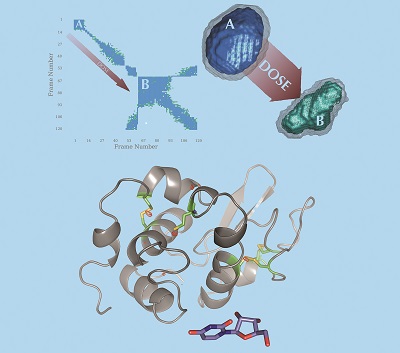X-ray radiation damage to biological macromolecules: further insights
 There are
eight papers on various aspects of radiation damage in the latest issue of the Journal of Synchrotron Radiation. The studies reported on macromolecular
crystallography (MX) and small-angle scattering (SAXS) experiments were
presented at the 9th International Workshop on Radiation Damage to
Biological Crystalline Samples, held at MAX IV in Lund in March 2016 [Garman &
Weik (2017), J. Synchrotron. Rad. 24, 1-6; doi: 10.1107/S160057751602018X].
There are
eight papers on various aspects of radiation damage in the latest issue of the Journal of Synchrotron Radiation. The studies reported on macromolecular
crystallography (MX) and small-angle scattering (SAXS) experiments were
presented at the 9th International Workshop on Radiation Damage to
Biological Crystalline Samples, held at MAX IV in Lund in March 2016 [Garman &
Weik (2017), J. Synchrotron. Rad. 24, 1-6; doi: 10.1107/S160057751602018X].
There have been concerted efforts over the last 15 years to understand the manifestations and origins of radiation damage suffered by protein crystals during MX experiments, and to establish mitigation strategies using various approaches. These have gradually resulted in a deeper understanding of the physical, chemical and structural factors affecting damage rates, and there is a growing literature which seeks to elucidate the pertinent parameters. As the range and scope of the investigations have broadened, so has our appreciation of the complexities of radiation damage phenomena, although a full knowledge of all processes involved has not yet been achieved. The need for this has, however, become more pressing, especially with the advent of X-ray free-electron lasers and new fourth-generation synchrotron sources such as MAX IV in Lund and NSLS II at Brookhaven now coming on-line with even higher flux densities than hitherto utilised. The high rate of damage inflicted by these X-ray beams has brought the issue of radiation damage during structural biology experiments into even sharper focus. Thus, an awareness of the effects of radiation damage both on diffraction and SAXS data, and on the macromolecular structures derived from them, will become increasingly important.
The papers in the special issue include: a re-examination of structural damage to tyrosine residues; two papers on finding the optimum MX data collection strategy for phasing of structures, one using sulfur SAD data in the presence of damage and the other on anomalous phasing with mercury by serial synchrotron data collection; a comparison of helical and standard rotation methods from a radiation damage standpoint; two papers examining damage rates in SAXS experiments and scavengers that could be used to reduce these rates as well as presenting some new visualisation tools; an analysis of the conformational heterogeneity of side chains as a function of dose in room-temperature and cryo-crystallography, and, finally, an imaging study on the effects of X-ray irradiation on microcrystals.

